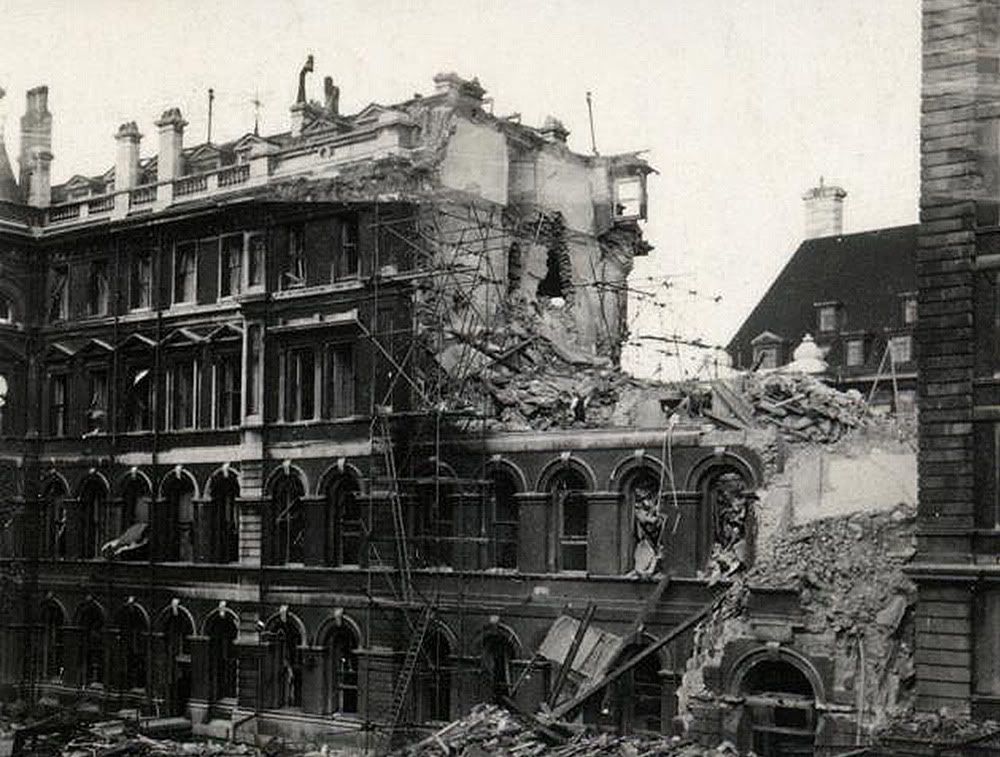While I’m sure I will find time to bring you those stories eventually I thought today I would start with a slightly less known one.
During World War II the British government made a concerted effort to be more organised in providing medical care to their population. While in World War I the conflict between being a doctor and soldier had led to many medical students leaving their courses to go and die on the fields of Flanders, this time around medical students were granted exemptions from drafting and rushed through truncated courses. Doctors and medical students were then drafted into the Emergency Medical Service and deployed throughout the country to deal with anticipated causalities both from the war and expected air raids. This service, coordinated through the ministry of health, became the precursor for the modern national health service.
Doctors and nurses in Britain struggled with large numbers of military and civilian casualties alongside the regular demands of the civilian population. This was coupled with a lack of resources which were stretched thin by the demands of the military forces and the strictures of rationing and the simple fact that the allure of war meant many of the best and brightest young medical staff chose to go overseas as quickly as possible to seek their adventure. In addition, the bombs were not just falling at the Front. They were falling across Britain as well.
St Thomas’s hospital in London, located right on the Thames, was a fairly obvious target for German bombers. The first bomb hit on the 9th September, but the most devastating attack occurred on the 15th September. This was the largest and most concentrated attack on London throughout the whole of the Battle of Britain.
 St Thomas's hospital - bomb damage during WWII (image source)
St Thomas's hospital - bomb damage during WWII (image source)
Just as the air raid siren sounded a bomb hit the basement of the building killing three people and injuring 52 hours. In another part of the basement an operation had just begun on a policeman suffering acute appendicitis. When steam and gas began to leak from pipes above them, the theatre staff moved further down the hall and continued the operation by torch light, the scout sister needing to search for instruments in the dark amongst rubble.
Meanwhile the dispensary in the basement had been affected by the bombing. Dispensary's typically contained a number of flammable solutions and these caught fire. Two men had fallen into this mess from the floor above and were trapped amongst the flames and twisted metal.
An assistant physician with the improbable name of Dr. Harry Rumbold Bathurst Norman and a medical student named Peter Maling between them organised a rescue mission. They tunnelled into the rubble to rescue the men, despite the fact that the bombs were still falling and the building itself was structurally unsound. Peter Maling administered morphine while Dr. Norman effected the rescue.
For their efforts they were quite rightly awarded the St George medal.
The following morning St. Thomas’s hospital was evacuated. Some patient's remained in place until the whole structure was deemed unsafe in 1941.
Even then, as a testament to the devotion and bravery of the doctors and nurses that served London throughout the war, an outpatient clinic continued to operate amongst the rubble of St. Thomas for the duration.
"Everybody who was near when the bomb exploded was absolutely covered in black dust – was quite unrecognisable. We found five nurses who were trapped and let them out by shifting some enormous piece of furniture and thus allowing a piece of wall to fall down. They seemed quite cheery.
All the while the bombs were falling round about – but we did not take much notice of them then. The amazing thing was that only five nurses were killed, and a lot of them had cuts and bruises but nothing serious. One was pinned under the ruins for hours before she died."
- Dr. Frank Crockett - writing home to his family about the bombing of St. Thomas on the 10 Sept 1940
All the while the bombs were falling round about – but we did not take much notice of them then. The amazing thing was that only five nurses were killed, and a lot of them had cuts and bruises but nothing serious. One was pinned under the ruins for hours before she died."
- Dr. Frank Crockett - writing home to his family about the bombing of St. Thomas on the 10 Sept 1940
And because I know people will be curious..
What happened to these two men?
Dr. Maling eventually became a general practitioner in his native New Zealand. He served out the remainder of the war with the army medical corps and retired with the rank of captain. He had an interest in maps and if you google his name you will find a number of books written by him about maps and charts, particularly about New Zealand. He died in 2007 at the age of 94.
Dr. Norman retired at the rank of Lt Colonel. He died in 1966 at the age of 65. He also married the daughter of a viscount. I have no further information, but you can see a picture of his headstone here.
Bibliography:
Brown, Kevin (2008) Fighting Fit: Health Medicine and War in the 20th Century, The History Press, Gloustecshire

It's absolutely fascinating to see how people coped when the war came to their own streets. People do the most amazing things without even thinking twice about it.
ReplyDelete